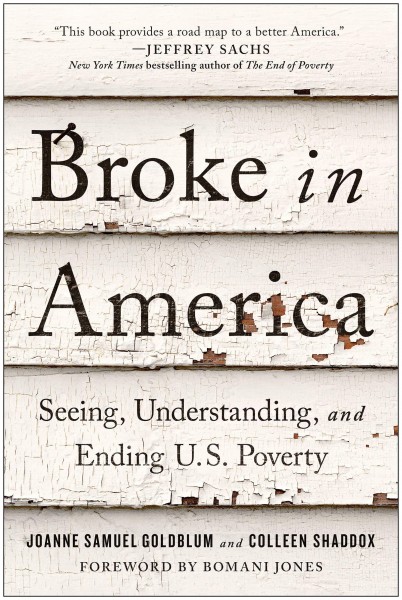“Broke in America: Seeing, Understanding and Ending US Poverty”, critically examines public policies and how they have contributed to the inequitable access to and distribution of resources that address the most basic of human needs. In three sections, 15 chapters and almost 300 pages, Joanne Samuel Goldblum and Collen Shaddox chronicle how multidimensional poverty throughout the United States truly is. In Parts I and II, they examine and share experiences of implicit and explicit stigma, stories of oppression in its many forms, as well as the impact of seemingly innocuous policies and how these tend to intersect ( e.g. structural racism and housing policies)—creating or reinforcing barriers which encumber access to much needed resources and opportunities for progress.
For those of us working in or interested in public health and public health policies, this book reinforces the impact of social determinants of health, as we see the direct impact of living conditions, specifically how lack of access to resources such as power, transportation, and housing, actively contribute to poor health related outcomes of those living in poverty. Thus, throughout the text and supported by research, the authors systematically outline the importance of challenging the current narratives about poverty and it being due to “lack of ambition or character” (Samuel Goldblum and Shaddox, 2021).
Understanding that poverty should be attributed to lack of resources and access to them is the key argument of the text. One is forced to reevaluate past beliefs about poverty when you are invited to read about the experiences of those living it. It becomes difficult to ignore pervasive structural barriers which prevent people from effectively accessing clean water, reliable transportation, hygiene supplies, food, and other resources many may take for granted. In fact, one needs only to reflect on the current public health emergency of the COVID-19 pandemic to recall how inequitable access to and distribution of resources, not only exacerbated the effects for those living in poverty, but also brought many of these veiled issues to the forefront.
It was important that, while extensively describing how policies and actions have significantly contributed to the impoverishment millions of Americans experienced, the authors sought to encourage readers to be hopeful about a future free from poverty. In Part III, they take the time to describe macro policies and realistic approaches that have been successfully implemented elsewhere and can potentially contribute to effectively tackling poverty and the associated adverse effects in the USA. At the end, a comprehensive and adaptable framework which can be used by individuals and communities to address unfair and inequitable policies and actions is provided.
In summary, while “Broke in America” pulls no punches about the reality and extent of poverty in the US, and the litany of reasons why it exists, it is critical to remember-there are tangible solutions available for persons to consider. Solutions that support transformational thinking in ensuring resource availability, making them accessible to break the cycle of being broke in America.
Bibliography
- Goldblum, J. S., & Shaddox, C. (2021). Broke in America: Seeing, Understanding, and Ending US Poverty. Dallas, Texas: BenBella Books, Inc.



